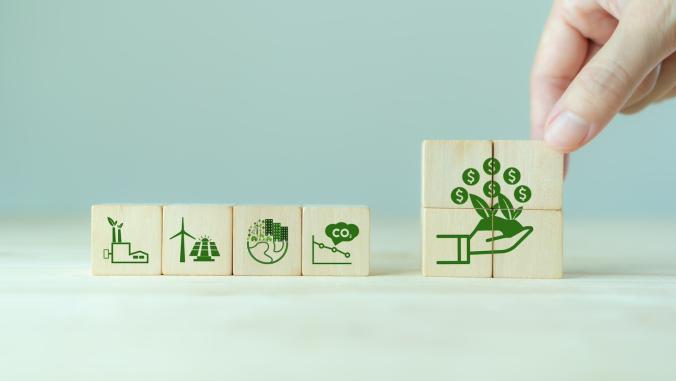How Sodexo and Pearson prioritize their SDGs
The broad nature of the U.N.'s aspirations leaves plenty of room for creative, corporate interpretation.

When the Sustainable Development Goals (SDGs) were adopted globally 12 months ago, many multinational companies proclaimed their intention to support at least some of the 17 ambitious global development aspirations. And they’ve been pretty true to their word.
Indeed, data published in early October by BSR/Globescan suggests more than half of companies (52 percent) are using or intend to use the SDGs to inform their corporate sustainability strategy. The harder part for corporate sustainability leaders, of course, has been figuring out which of these rather open-ended goals are truly relevant.
Some organizations, such as global food services giant Sodexo, have aligned themselves with all of them. "There’s really not one SDG that we value over the others," said Rohini Anand, senior vice president of corporate responsibility and chief diversity officer for the company, during a panel session at last week’s annual BSR conference in New York. (Sodexo ranks as the 19th largest employer in the world.)
However, Anand said the SDG mandate to encourage "gender equality" (No. 5) speaks to her most personally, because she feels that progress toward it can influence positive momentum toward many of the other goals. "This investment is invested in families, in communities; it has impacts on health, education, reducing poverty, stopping hunger," she told the attendees.
Publishing company Pearson Education is laser-focused on the fourth goal ("quality education") for a similar reason — the ripple effect it can have on helping people in both emerging and developed economies find employment, said another BSR panelist, Tim Bozik, president of global products for the company. "Students are learners across all ages and stages," he said.
Putting words into practice
Let’s be real: putting an SDG into context requires some thoughtful dialogue. Most of them are very vague yet simultaneously very ambitious, by design.
To get Sodexo’s managers excited about the idea of creating a more gender-diverse workforce, the company surveyed thousands of its own managers to better understand the impact that "gender-balanced teams" (those that included 40 percent to 60 percent women) might have on the company’s financial performance.
Those teams finished ahead of other teams on all five of the company’s key performance indicators — brand awareness, client protection, engagement, gross profit and organic growth, Anand said. "It’s the question of why are we doing this work," she said. "It certainly was a want to engage all of our managers."
I think the SDGs have provided us a platform to collaborate, and to scale out, increase the impact of what we are doing.
Based on that data, Sodexo set a goal to ensure that all of its teams are gender-balanced. It also is striving to change the make-up of its upper management so that 40 percent of those roles are filled by women by 2025, she said.
"I think the SDGs have provided us a platform to collaborate, and to scale out, increase the impact of what we are doing," Anand said.
A new framework for collaboration
The emergence of the SDGs is transforming how venerable worldwide children’s advocacy organization UNICEF engages with companies to address child rights within businesses — notably, the impact of children within global supply chains, said Subajini Jayasekaran, child rights and business manager for UNICEF, who also shared her experiences with the BSR attendees.
Over the past two years, that has inspired UNICEF to heighten its resources dedicated to collaborating with organizations involved in the Bangladesh garment sector, palm oil production in Indonesia and Asia, apparel production in Vietnam, teak plantations in India and cocoa farming in Côte d'Ivoire.
For example, in designing education proposals and immunization programs for Indonesia, UNICEF is tapping local businesses to help reach deep into communities. "Our colleagues are talking every day with the ministry of education, of public health, they’re designing policies, they’re designing polio immunization initiatives. How can they link up with what capacities and resources exist on the ground through business?" Registrations, for example, could be increased dramatically, Jayasekaran noted.
Why should or would a business care to be involved? One motivator might be the opportunity to reduce instances of absenteeism related to preventable illnesses. Even advocating a simple policy, such as encouraging new mothers to bread-feed their infants, could have a big impact. That’s because breast-fed babies are less likely to become sick which, in turn, makes it possible for mothers to report to work more consistently.
A sharper lens for product development
Pearson uses the SDGs as a central consideration for an in-house incubator it has established to invest in companies, ventures and organizations serving underserved communities with high-quality education, according to Bozik.
One example is the company’s alliance with Save the Children to create a partnership aimed at providing education for refugee children "displaced by emergencies." The initial focus is on Syrian families in Jordan.
"We’re using the spirit of the SDGs, including a greater focus on measurement, in a lot of our product development broader processes," Bozik said.





